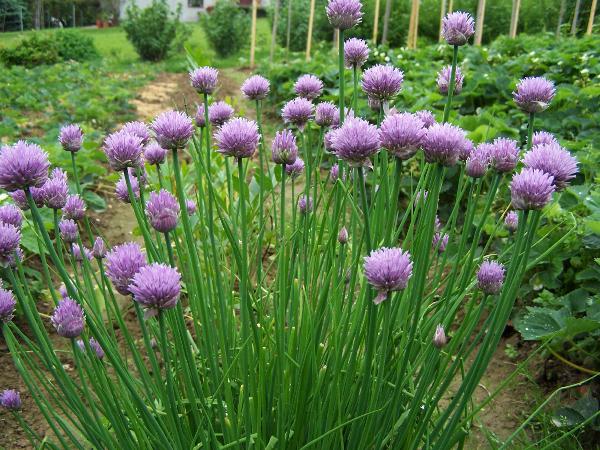Today there are many plants that at the same time able to impress with its beauty and excellent taste. One of them is decorative garlic.
Table of contents
What is decorative garlic and the purpose of its cultivation
Decorative garlic is very similar to ordinary, only differs from it in its incredibly beautiful inflorescence. Depending on the species, it throws up to 12 leaves and has excellent inflorescences.which are full of a variety of shades.
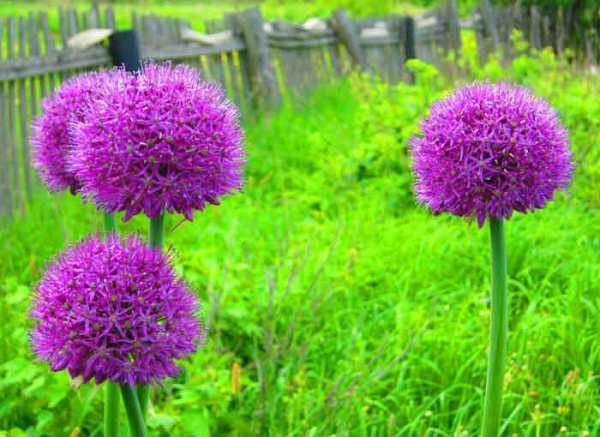
However, the bulb of an ornamental plant is very small, its diameter, as a rule, is less than 5 mm and has a brown or gray color.
This plant both decorates the plots and eats it.
Most popular varieties
There are about 500 kinds of ornamental flowering garlic in the world. The most famous among which are:
- Neapolitan;
- Moth;
- Narcissism.
Neapolitan
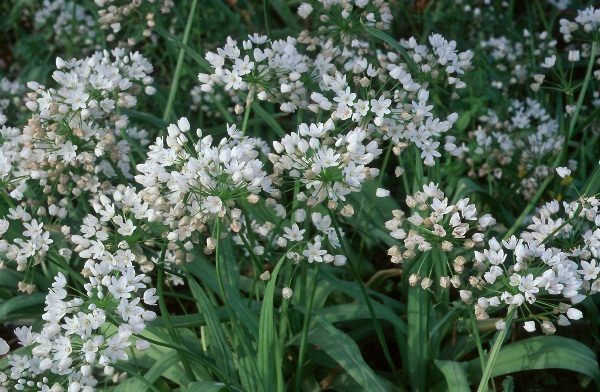
It has white unusually beautiful inflorescence of bell-shaped flowers. It looks great in high vases and sunny lawns. This variety blooms in June.
Moth
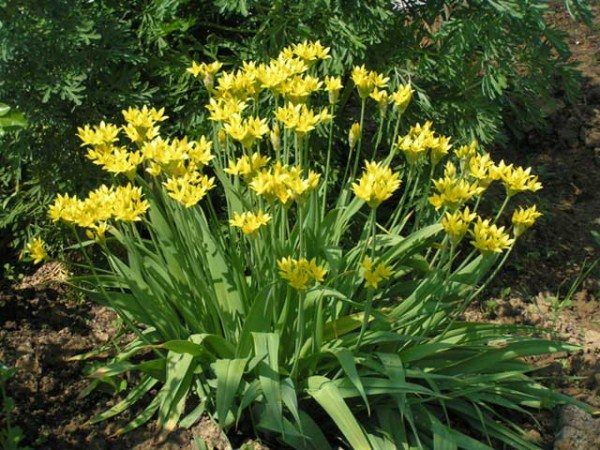
Often also called the golden bow. It is relatively low, reaches 25 cmand the diameter of the inflorescence becomes 6 cm. The plant blooms in late June or July. Its feature is that it can grow both in the sun and in partial shade.
Narcisflower
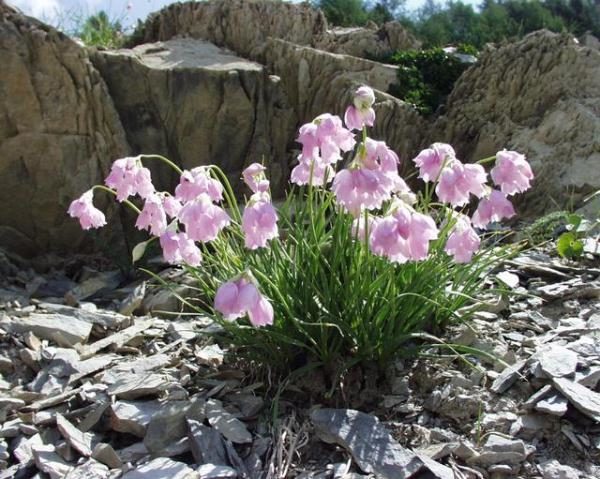
It does not correspond to its name, because its flowers have a wine-red shade. This variety is distinguished by its originality. He is also short, total 25 cm.
Landing rules when and where
For planting decorative garlic choose a sunny and dry place, because it does not tolerate excessive moisture and does not grow well in the shade.Once a 3 years change his place of landing.
If seeds are used for planting, they must be planted in the soil no less than six weeks before the onset of frost.
For sowing seeds in the ground pits are not deeper than 5 cm. They are covered with coarse sand, the thickness of the ball does not exceed 1.5 cm.
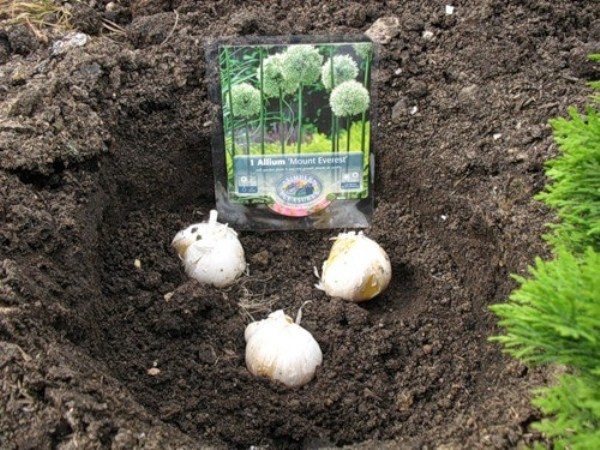
If garlic is propagated with slices, the depth of the fossa should be no more than a diameter of 2-3 bulbs. When disembarking the lobules, you can put moistened newspapers in which holes are made. These newspapers will not let the weeds germinate in the spring.
Care for decorative garlic - how to water and feed
Decorative garlic is completely picky in the care. It does not need frequent watering.. But it should also not allow long-term drying out of the soil. In general, the plant for the season watered about 3 times. This plant just feels fine at a temperature of 22-25 degrees.
After watering or rain should loosen the soil.
Garlic will grow large if it breaks the arrows, otherwise it will be small and not so beautiful.

This plant also needs feeding. 2 weeks before planting the soil must be fertilized. For this take:
- wood ash - 400 g;
- superphosphate - 300 g;
- humus - 10 kg;
- magnesium sulfate - 300 g
This amount is made with the calculation of 1 square. m. of land.
After planting, seedlings sprinkled with a layer of humus or peat, which will serve as fertilizer and protect the crop from cold and drying.
Diseases and pests
Decorative garlic, like all plants, is subject to various diseases, and also some pests are not against them. The most common of them include:
- neck rot;
- downy mildew;
- mole;
- root tick;
- onion fly.
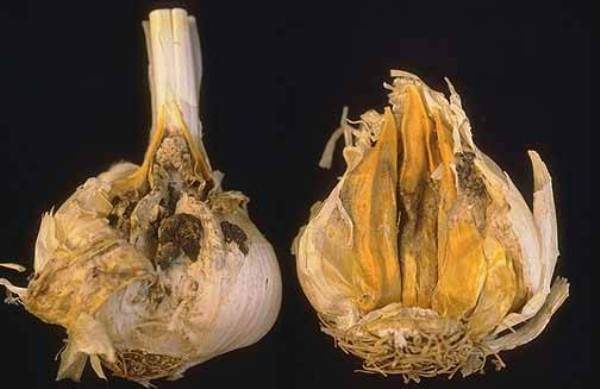
Neck rot - This is a disease that occurs during storage of the bulbs. They become soft and watery, and then dramatically dry up. To avoid such trouble, the bulbs should be thoroughly dried in the sun before being stored.

As for downy mildew, the reason for its appearance are mushrooms that love wet, wet weather. With the defeat of these fungi, the growth of plants slows down, pale green spots appear, which then turn yellow and the plant dies with time.
To prevent the appearance of downy mildew, you must:
- dry heads well at 40 degree temperature;
- plant it in a sunny dry area;
- remove weeds;
- regularly every 3 years to change the landing site.
When pests appear such as the root mite, mole, or onion fly, the plant is treated with 2% chlorophos. Ash, peat and tobacco dust will also be freed from them.
- Damage to ornamental garlic root onion mite
- Signs of Onion Fly Damage
- Garlic damaged onion moth
Application and combination with other plants.
Decorative garlic has found its use.:
- in cooking;
- in landscape design;
- as a disinfectant.
Arrows of this type can fully replace its segments, because they are often used in the process of cooking the most exquisite dishes.
Thanks to its beautiful spherical flowers, this plant will not yield its beauty to any ordinary flower. Now it is very fashionable to have on our summer cottage such hothouses — archery gardens. The flowerbeds look especially beautiful, in which about 5 varieties of this plant grow nearby.. However, it should be remembered that after flowering the leaves die off and, so that the plot does not lose its presentable appearance, various flowers are planted next to the garlic. They will hide these wilted leaves. Just great next to him will look plants that bloom in early summer. The most suitable option are hydrangeas, peonies, delphiniums, irises and others.
- Decoration of park areas
- Giant Decorative Garlic
- Decorative garlic in the garden garden
- Decorative garlic is widely used in landscape design.
Dried inflorescences of this garlic will serve as an excellent element of winter bouquets.
It is also possible to prepare a solution from decorative garlic, which will be a great helper in the fight against a variety of garden pests.
If you want to please your stomach with tasty food, and your eyes are incredibly beautiful sight, then decorative garlic - this is exactly the plant that should be planted on your site. One has only to decide on the varieties, and without much effort you will get an incredible view of your summer courtyard.
